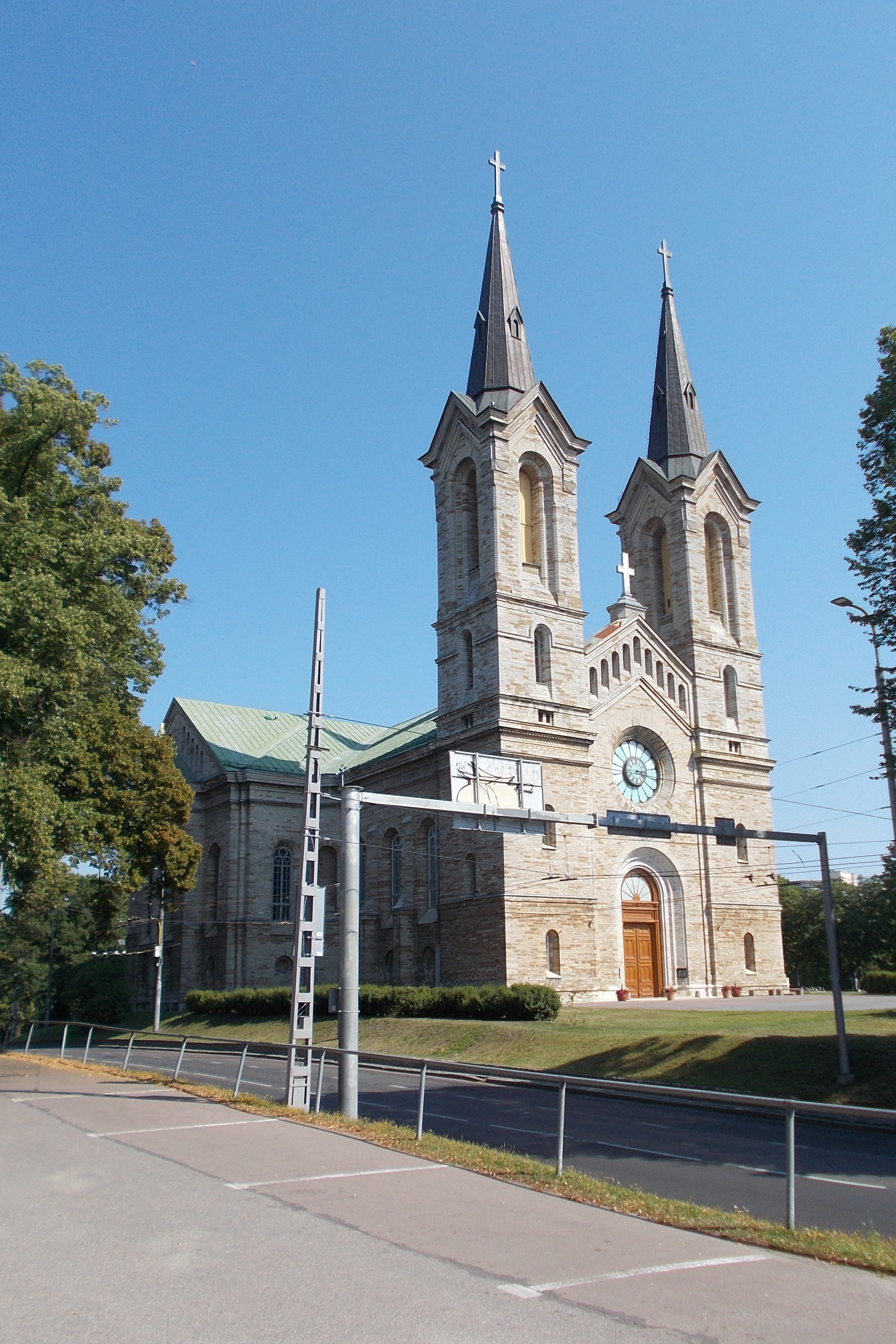Charles's Church, Tallinn on:
[Wikipedia]
[Google]
[Amazon]
Charles's Church () is a Lutheran church in Tallinn, Estonia, built 1862–1870 to plans by  In the 19th century, reconstruction plans were put forward. Donations of money were started in the 1850s, and the cornerstone of the new church was laid in 1862. The church, still incomplete, was inaugurated in 1870. The two towers on the west side were enlarged in 1882.Tallinn Neil Taylor - 2007 - Page 151 CHARLES'S CHURCH "This massive and austere late 19th-century limestone building seats 1,500 people ... original wooden church built in the late 17th-century"
The church is designed in the tradition of Western European Cathedrals, with two western towers flanking a
In the 19th century, reconstruction plans were put forward. Donations of money were started in the 1850s, and the cornerstone of the new church was laid in 1862. The church, still incomplete, was inaugurated in 1870. The two towers on the west side were enlarged in 1882.Tallinn Neil Taylor - 2007 - Page 151 CHARLES'S CHURCH "This massive and austere late 19th-century limestone building seats 1,500 people ... original wooden church built in the late 17th-century"
The church is designed in the tradition of Western European Cathedrals, with two western towers flanking a
Otto Pius Hippius
Otto Pius Hippius (, Saint Petersburg — , Saint Petersburg) was a Baltic German architect, particularly noted for several buildings in present-day Estonia.
Life and works
Otto Hippius was born to the painter and lithographer, Gustav Adolf Hi ...
. It is Tallinn's grandest 19th-century church.
Tõnismägi hill has been the location of a chapel probably since the 14th century. In 1670, during the time of Swedish rule, the Swedish King Charles XI
Charles XI or Carl ( sv, Karl XI; ) was King of Sweden from 1660 until his death, in a period of Swedish history known as the Swedish Empire (1611–1721).
He was the only son of King Charles X Gustav of Sweden and Hedwig Eleonora of Holstein- ...
commissioned the construction of a church on the site, for the use of the Estonian and Finnish population of Tallinn (as opposed to the Baltic German population). The church was named after the king. In 1710, during the Great Northern War, this first wooden church was burnt down.
 In the 19th century, reconstruction plans were put forward. Donations of money were started in the 1850s, and the cornerstone of the new church was laid in 1862. The church, still incomplete, was inaugurated in 1870. The two towers on the west side were enlarged in 1882.Tallinn Neil Taylor - 2007 - Page 151 CHARLES'S CHURCH "This massive and austere late 19th-century limestone building seats 1,500 people ... original wooden church built in the late 17th-century"
The church is designed in the tradition of Western European Cathedrals, with two western towers flanking a
In the 19th century, reconstruction plans were put forward. Donations of money were started in the 1850s, and the cornerstone of the new church was laid in 1862. The church, still incomplete, was inaugurated in 1870. The two towers on the west side were enlarged in 1882.Tallinn Neil Taylor - 2007 - Page 151 CHARLES'S CHURCH "This massive and austere late 19th-century limestone building seats 1,500 people ... original wooden church built in the late 17th-century"
The church is designed in the tradition of Western European Cathedrals, with two western towers flanking a rose window
Rose window is often used as a generic term applied to a circular window, but is especially used for those found in Gothic cathedrals and churches. The windows are divided into segments by stone mullions and tracery. The term ''rose window'' w ...
, and built in a Romanesque Revival style. The church has a Latin cross plan, and is in effect a hall church, the ceiling being held aloft without the use of pillars (according to a solution thought out by Hippius in collaboration with R. von Bernhardt). The apse is decorated by a fresco by Johann Köler
Johann Köler (8 March 1826 – 22 April 1899) was a leader of the Estonian national awakening and a painter. He is considered as the first professional painter of the emerging nation. He distinguished himself primarily by his portraiture and to ...
, the first fresco in Estonia made by an ethnic Estonian. The church still houses the bells of the original, wooden church, cast in Stockholm
Stockholm () is the Capital city, capital and List of urban areas in Sweden by population, largest city of Sweden as well as the List of urban areas in the Nordic countries, largest urban area in Scandinavia. Approximately 980,000 people liv ...
in 1696.
References
External links
* {{Authority control Churches in Tallinn Lutheran churches in Estonia 19th-century churches in Estonia